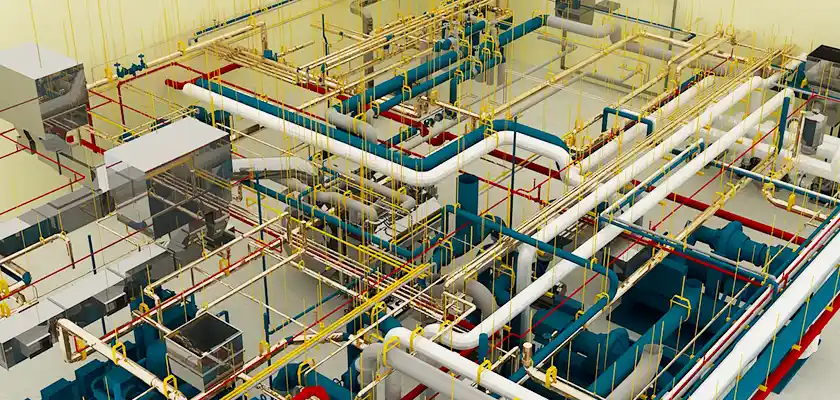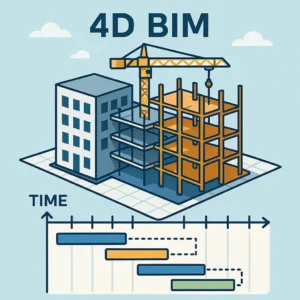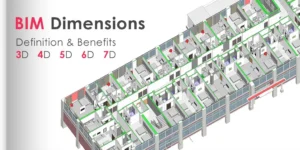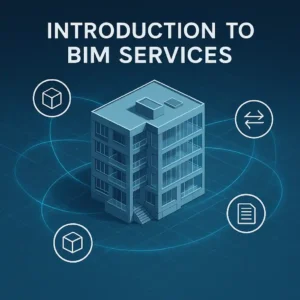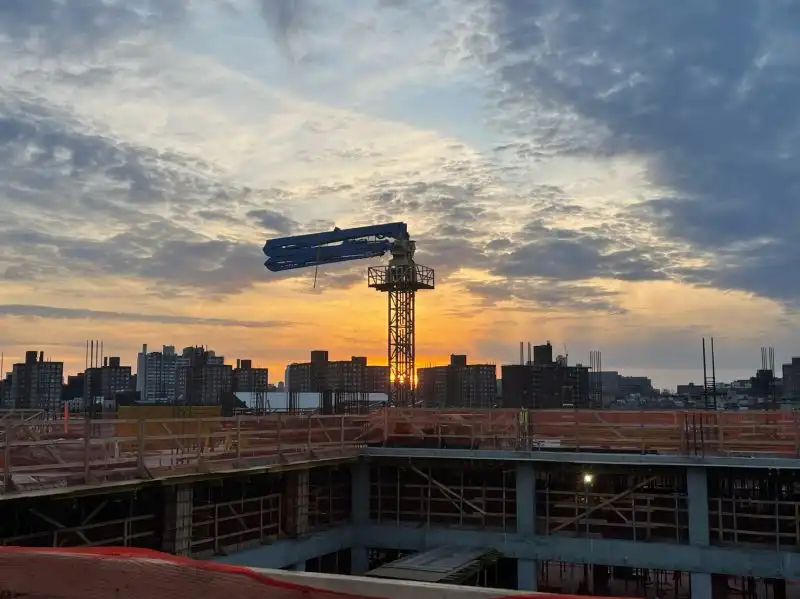The MEP is one of the most complicated and significant stages of the project life cycle in the field of modern construction. It is not a small feat to ensure the type of fit between mechanical systems, electrical systems, plumbing systems with architectural models, and structural models. One conflict means high costs of rework, step losses, and this may result in safety issues.
The clash detection tools enable the project teams to identify, visualize, and solve conflicts before construction happens. Clash detection software significantly increases project results by automatically detecting spatial conflicts among disciplines in a three-dimensional work environment through MEP BIM Services.
This blog shall discuss the best 5 clash detection software in MEP coordination, and their strengths and weaknesses, their features as well as how they facilitate the design to construction process.
1. Autodesk Navisworks
Autodesk Navisworks is one of the gold standards of the clash detection tool, and many are drawn to its powerful coordination abilities and extensive support. Navisworks is the most widely used technology in the AEC industry, which allows teams to merge multiple models of different disciplines, including architectural, structural, and MEP, in a single space in which conflicts can be mapped and resolved.
It has an excellent tool called Clash Detective. It enables the user to have their tests automatically conducted to identify hard clashes (physical overlaps), clearance interferences (soft clashes), and issues concerning workflows. Navisworks is perfect for having teams that can collaborate on various platforms, such as those that support Revit, AutoCAD, and IFC, among others.
BIM coordinators and the project managers will be able to visualize the point of clash itself, that is, which point is conflicting, allocate blame, and oversee the resolution of trouble stage by stage with a real-time view. Alongside the integration with 4D scheduling tools, the clash detection can be performed in terms of time, which will show when the clashes will take place in terms of the project schedule.

Why it stands out:
- Highly detailed clash reports
- Supports large federated models
- Seamless Autodesk ecosystem integration
2. Trimble Connect with Tekla BIMsight
Trimble Connect is a cloud-based collaboration tool that, when combined with a legacy tool, Tekla BIMsight, provides structural and MEP specialists with a solution on the next level. Although Tekla BIMsight is not actively developed, Trimble Connect offers a lot of its strong functions, and a good alternative to too hot activity on Tekla BIMsight.
This solution is compatible with the standards of several industries, such as IFC and DWG, which allows cross-platform interoperability. Trimble Connect includes clash detection tools that allow determining spatial interference between models, which can be beneficial to a steel detailing or project-intensive prefab MEP pipeline.
Cloud collaboration is one of its strong points in this clash detection tool. Many users can see what is going on, comment, and fix clashes anywhere, so it is a perfect tool to use when teams are not located in one place. The functions of issue management allow the teams to delegate tasks, monitor their status, and add documentation to simplify the whole process through MEP Coordination.
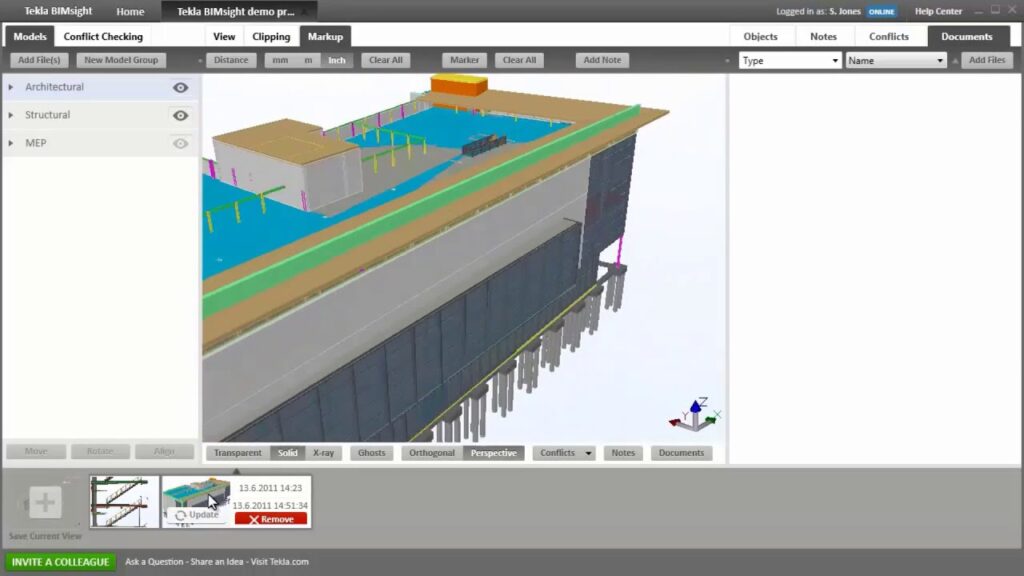
Why it stands out:
- Cloud-first clash detection and coordination
- Strong support for OpenBIM workflows
- Integrated with Trimble hardware and scanning tools
3. Solibri Office
Also called Solibri Model Checker, Solibri Office is an enterprise-grade BIM quality check and model vetting system that boasts a powerful clash detection tool and rule-based analysis abilities. It is more than a detector of spatial conflicts- it provides logic, code, and constructability checks.
Solibri Office is unlike simple tools, which only recognize geometry overlaps, but has intelligent rules that users apply to recognize what matters to them in terms of building codes, project standards, and based on the requirements of various disciplines. As one example, it may be able to indicate some placement of an electrical cable tray too apparent compared to a mechanical ducting, or insufficient clearance in service corridors.
Its classification capabilities enable teams to aggregate and examine particular components, including HVAC systems, electrical conduits, or plumbing fixtures. The result of the clashes is then given in a simple, understandable form in the reports, screenshots, the level of issue severity, and a recommendation to close it.

Why it stands out:
- Advanced rule-based conflict analysis
- Supports QA/QC alongside clash detection
- IFC and OpenBIM compatibility
4. Revizto
Revizto is a cloud-integrated, issue-tracking and model platform that merges visualization, communication, and clash detection tools into one user-friendly interface. It is quickly gaining popularity among BIM managers, and project engineers for its intuitive design and collaborative workflows.
Revizto allows users to review models in 2D and 3D, identify issues, and track them in real time. One of its strongest features is its integrated clash detection engine, which works natively or can be enhanced through integration with Navisworks. Users can run clash tests, filter results, and assign them to team members—all within the same environment through MEP 3D Modeling.
The real-time issue tracker eliminates the need for endless emails and disconnected spreadsheets. Users can add comments, attach screenshots, and update statuses directly in the cloud. The platform supports mobile devices, which makes it invaluable for site teams needing quick access to coordinated models and open issues.
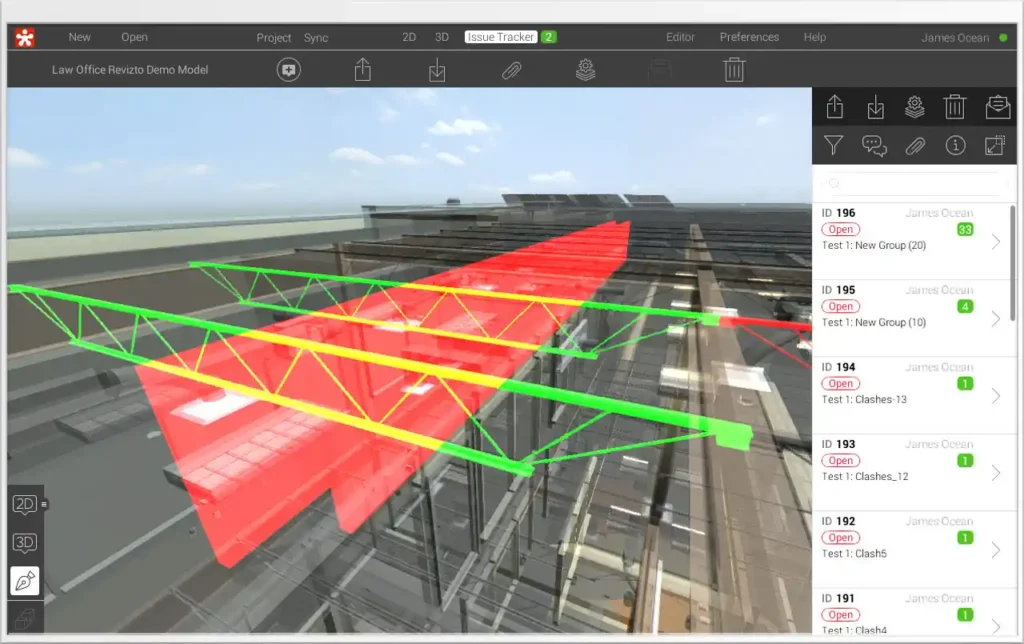
Why it stands out:
- Real-time cloud-based collaboration
- Built-in clash detection with mobile support
- Intuitive interface for faster adoption
5. BIMcollab ZOOM
BIMcollab ZOOM is a lightweight, high-speed model viewer and clash detection tool designed for OpenBIM collaboration. It integrates seamlessly with the broader BIMcollab ecosystem, which includes issue tracking, BCF management, and cloud-based dashboards.
With BIMcollab ZOOM, a great clash detection tool, users can perform automatic clash detection with customizable filters and smart grouping, making it easy to isolate the most relevant MEP conflicts. For example, you can choose to detect only electrical-to-structural clashes or focus on duct-to-beam conflicts based on model classifications.
The real strength of ZOOM lies in its smooth connection to BIMcollab Cloud, which allows issue tracking across platforms like Revit, Archicad, and Navisworks. This ensures that all stakeholders can access and address clash issues within their native modeling environments, without switching tools.
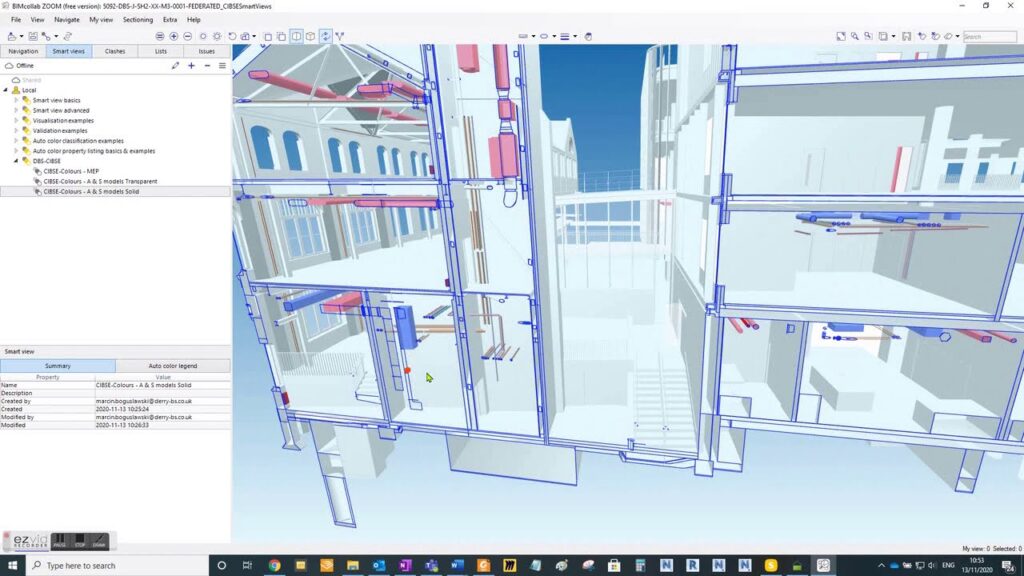
Why it stands out:
- Fast and efficient clash detection for IFC models
- Integrated issue management across software platforms
- Affordable and easy to adopt
Conclusion
Choosing the right clash detection tools is essential for successful MEP. With systems like HVAC, plumbing, and electrical all competing for space within a structure, even small oversights can result in costly delays. Fortunately, tools like Navisworks, Solibri, and Revizto give teams the ability to detect, communicate, and resolve issues early—before they reach the construction site through Strand Co.
Whether you’re part of a large multidisciplinary project or working in a tightly scoped renovation, investing in the right clash detection software will enhance coordination, reduce rework, and improve project delivery.

